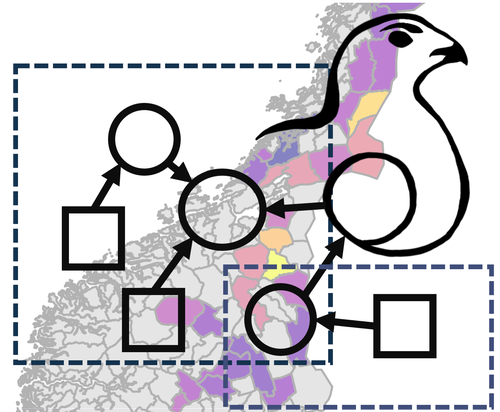
ARNOLD Todd
Recommendations: 0
Review: 1
Review: 1

Large-scale spatio-temporal variation in vital rates and population dynamics of an alpine bird
Do look up: building a comprehensive view of population dynamics from small scale observation through citizen science
Recommended by Aidan Jonathan Mark Hewison based on reviews by Todd Arnold and 1 anonymous reviewerPopulation ecologists are in the business of decrypting the drivers of variation in the abundance of organisms across space and time (Begon et al. 1986). Comprehensive studies of wild vertebrate populations which provide the necessary information on variations in vital rates in relation to environmental conditions to construct informative models of large-scale population dynamics are rare, ostensibly because of the huge effort required to monitor individuals across ecological contexts and over generations. In this current aim, Nater et al. (2024) are leading the way forward by combining distance sampling data collected through a large-scale citizen science (Fraisl et al. 2022) programme in Norway with state-of-the-art modelling approaches to build a comprehensive overview of the population dynamics of willow ptarmigan. Their work enhances our fundamental understanding of this system and provides evidence-based tools to improve its management (Williams et al. 2002). Even better, they are working for the common good, by providing an open-source workflow that should enable ecologists and managers together to predict what will happen to their favourite model organism when the planet throws its next curve ball. In the case of the ptarmigan, for example, it seems that the impact of climate change on their population dynamics will differ across the species’ distributional range, with a slower pace of life (sensu Stearns 1983) at higher latitudes and altitudes.
On a personal note, I have often mused whether citizen science, with its inherent limits and biases, was just another sticking plaster over the ever-deeper cuts in the research budgets to finance long-term ecological research. Here, Nater et al. are doing well to convince me that we would be foolish to ignore such opportunities, particularly when citizens are engaged, motivated, with an inherent capacity for the necessary discipline to employ common protocols in a standardised fashion. A key challenge for us professional ecologists is to inculcate the next generation of citizens with a sense of their opportunity to contribute to a better understanding of the natural world.
References
Begon, Michael, John L Harper, and Colin R Townsend. 1986. Ecology: individuals, populations and communities. Blackwell Science.
Fraisl, Dilek, Gerid Hager, Baptiste Bedessem, Margaret Gold, Pen-Yuan Hsing, Finn Danielsen, Colleen B Hitchcock, et al. 2022. Citizen Science in Environmental and Ecological Sciences. Nature Reviews Methods Primers 2 (1): 64. https://doi.org/10.1038/s43586-022-00144-4
Chloé R. Nater, Francesco Frassinelli, James A. Martin, Erlend B. Nilsen (2024) Large-scale spatio-temporal variation in vital rates and population dynamics of an alpine bird. EcoEvoRxiv, ver.4 peer-reviewed and recommended by PCI Ecology https://doi.org/10.32942/X2VP6J
Stearns, S.C. 1983. The influence of size and phylogeny of covariation among life-history traits in the mammals. Oikos, 41, 173–187. https://doi.org/10.2307/3544261
Williams, Byron K, James D Nichols, and Michael J Conroy. 2002. Analysis and Management of Animal Populations. Academic Press.